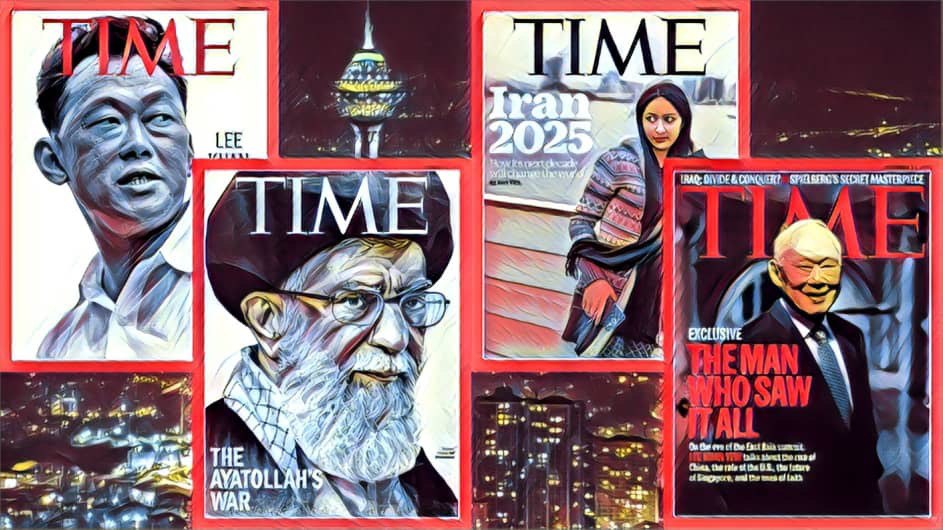Singapore, the cat that catches mice
According to Iran Gate, Singapore is recognized as one of the wealthiest countries in the world, despite the lack of democracy and political development in its governance structure. Singaporean citizens have one of the highest per capita incomes among different nations globally.
However, unlike developed countries, they have no understanding of democracy. Perhaps it can be summed up in one sentence: Singapore is like a cat that, regardless of its fur color, always knows its primary duty is to catch mice. Mice that can certainly fill the bellies of the hunter’s children.
The growth that the Republic of Singapore has experienced since its independence to this day has amazed and impressed economists and social scientists. Perhaps when Lee Kuan Yew, the late leader of Singapore, was shedding tears in August 1965 over the newly independent city-state of Singapore from the Malay Federation, he never imagined
that one day the people of Singapore would be recognized as some of the wealthiest individuals on the planet. It might not have even crossed his mind that he would become the first benevolent dictator of the modern world, seizing power without bloodshed while enjoying incredible and genuine popularity among Singaporean citizens.
But what really happened that brought Singapore to this point, and how is it currently recognized as one of the wealthiest countries in the world? The more important question is whether Singapore’s successful model can serve as a suitable blueprint for developing countries like Iran. Iran Gate has attempted to answer these questions in a three-part series. This report is the first part of this series, introducing Singapore and the path it took to achieve success.
The story of a wealthy city-state
When Singapore was founded by Sir Thomas Stamford, the governor of Java, in January 1819, it was home to about a thousand Malay fishermen and a few Chinese families who made a living through agriculture. However, this small fishing village has now become a modern and prosperous city-state, hiding an extraordinary and fascinating story within.
Perhaps Singapore is the only country in the world that gained independence not by the will of its inhabitants but by being forcibly separated from its mother country. On August 9, 1965, after prolonged political struggles, Singapore was forced to leave the Malaysian Federation and reluctantly declared independence as a city-state in Southeast Asia.
Lee Kuan Yew, the late Prime Minister of Singapore, writes in his memoirs that we were asked to leave Malaysia and face the future without any help. We had little chance of survival, but on August 9, 1965, as I was crying in my office for the people of Singapore, we began a journey along an unknown road to an uncertain destination, filled with indescribable fear.
However, over time, it became clear that the inhabitants of this small village not only navigated this winding road safely but also, about 60 years after this country’s forced independence, Singaporeans are now considered one of the wealthiest nations in the world.
Problem after problem
1. Land
When Singapore was forced to gain independence from the Malaysian Federation, it was one of the most densely populated countries in terms of population distribution. Only 137 square kilometers of the 581 square kilometers of the country’s area in 1959 were habitable and usable. However, over the past 60 years, this has increased to about 750 square kilometers due to the Singapore government’s efforts in land reclamation policies.
2. Overpopulation
Another issue for Singapore was its large population. On the one hand, health and education were at a very low level, and on the other hand, ethnic and racial, and even religious differences led to serious conflicts in this small city-state. However, over time, the population of this small country has grown from about 2 million in the 1960s to about 6 million today. Despite this, there is no trace of racial and religious conflicts in this country. The level of health is also very high, and the indicators suggest that Singapore is among the top ten countries in the world with the highest public health standards.
3. Poverty
The most extraordinary transformation of Singapore from a poor third-world country to a wealthy nation between 1960 and 2016 is that its GDP per capita has increased about 60 times. This has risen from 1,310 Singapore dollars to 99,000 Singapore dollars, meaning that GDP per capita in Singapore has doubled on average every year over the past 60 years, which is unique and unparalleled. As a result, it can be said that Singaporeans have transformed from a poor third-world nation into one of the wealthiest people on the planet over half a century.
People who have grown their economic pie every year and today stand at the top of the peak. Naturally, as the economic pie grows larger, the share of citizens and community components also increases, which has managed to reduce poverty to one of the lowest levels of its kind globally.
The next part of this series will address the reasons for Singapore’s success.
The late leader of Singapore
English
View this article in English

